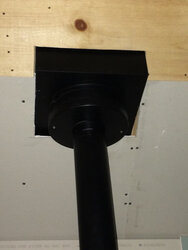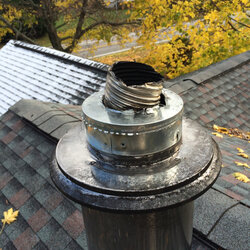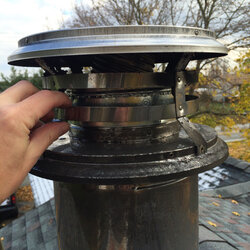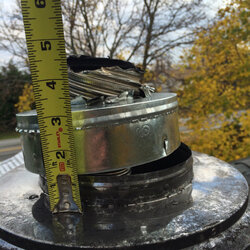This is my first post here so thanks in advance for any help. I purchased a used Lopi 400 and am installing it where a wood stove used to be. I was told by a reputable dealer to run 3" SS flex through my existing almost brand new 6" class a chimney. I used an adapter at the cathedral ceiling box that hooks but doesn't seal to the box and it has a collar that is 3" that the flex pipe clamps to.
I realize now after this is all installed that there would have been a better way to do this and that would have been to get a 3-6" adapter that actually seals into the existing 6" and leave everything be from there up.
I don't want to uninstall now and spend the money on this new adapter. Am I being unreasonable?
The possible issues that I see are that I need to join the 3" liner to the 6" chimney at the roof to prevent weather and smoke from entering as well as sealing this ceiling adapter as good measure.
I was hoping to rig some of this up to run for the season and then next year pull the liner and buy the correct ceiling adapter.
Does this sound safe?
Appliance exhaust is 3"
From the appliance to the ceiling box I have the recommended duravent twist lock piping. It's a little over 7' from the stove exhaust to the box.
The 6" SS class a pipe runs for about 8-9' above the ceiling box.
Thanks again!

I realize now after this is all installed that there would have been a better way to do this and that would have been to get a 3-6" adapter that actually seals into the existing 6" and leave everything be from there up.
I don't want to uninstall now and spend the money on this new adapter. Am I being unreasonable?
The possible issues that I see are that I need to join the 3" liner to the 6" chimney at the roof to prevent weather and smoke from entering as well as sealing this ceiling adapter as good measure.
I was hoping to rig some of this up to run for the season and then next year pull the liner and buy the correct ceiling adapter.
Does this sound safe?
Appliance exhaust is 3"
From the appliance to the ceiling box I have the recommended duravent twist lock piping. It's a little over 7' from the stove exhaust to the box.
The 6" SS class a pipe runs for about 8-9' above the ceiling box.
Thanks again!






 Haha. Great point though and I actually think I skimmed something to that effect for measuring for a custom fit cap. I'll triple check but if I have the full 3" of clearance than I should be good.
Haha. Great point though and I actually think I skimmed something to that effect for measuring for a custom fit cap. I'll triple check but if I have the full 3" of clearance than I should be good. glad it works for ya.
glad it works for ya.